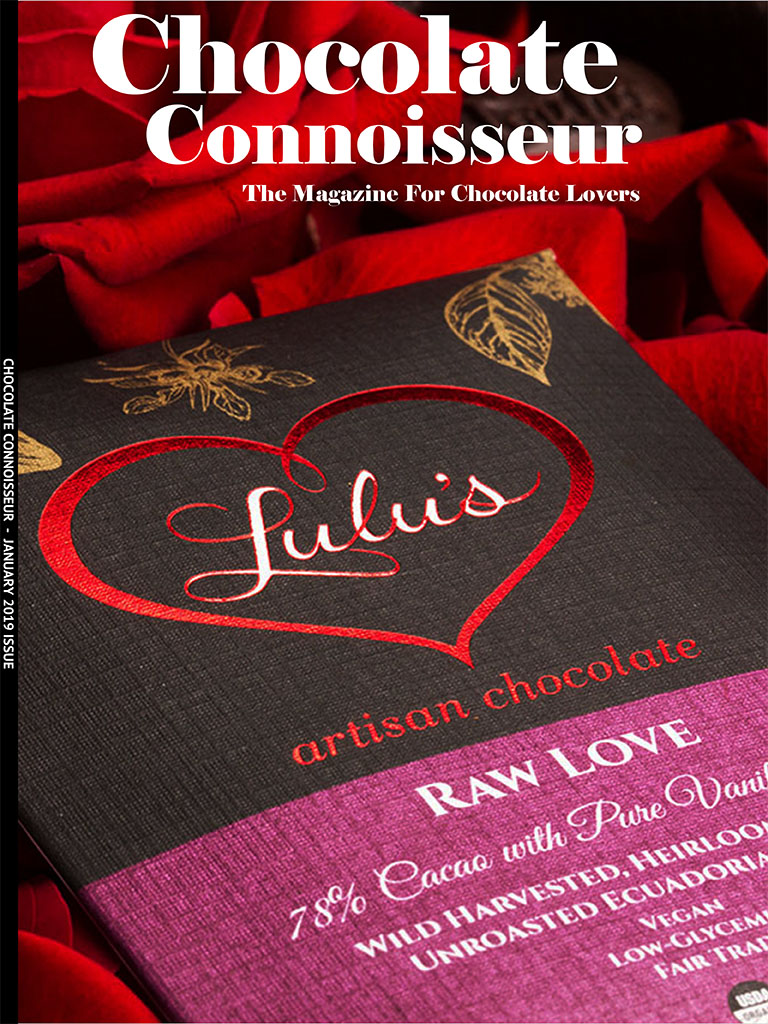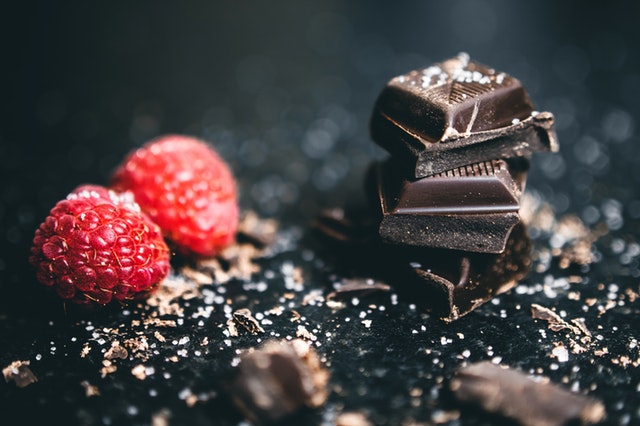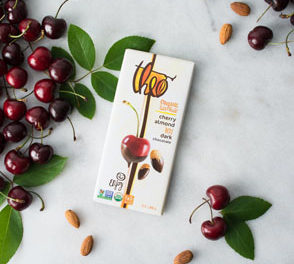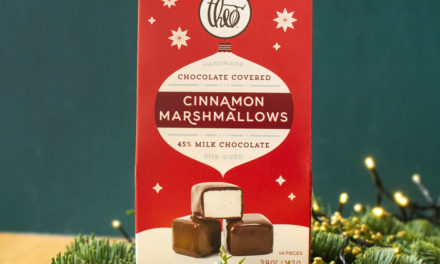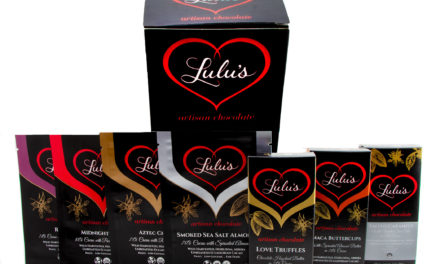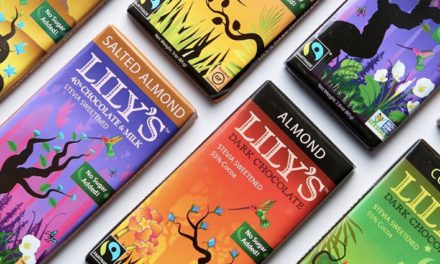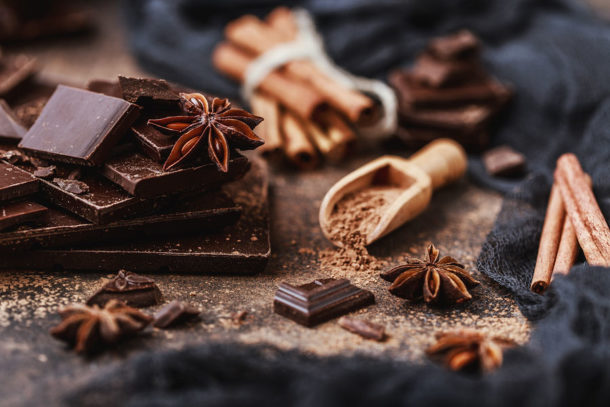On the Chocolate Regular: Chocolove Preview
by Rene’ Zimbelman
Calling All Chocolovers
With Valentine’s Day around the corner, it’s fitting to spend some time with Chocolove in this month’s On the Chocolate Regular. Not only is love found in their name, three varieties of chocolate bars are packaged as valentines, with space provided to fill in To and From.
And the other chocolate bars have a package design that resembles a love letter sent from a far-away place, with a romantic love poem on the inside of each package. Of the three Chocolove bars I picked up recently for sampling, two contained two different poems from Shakespeare and a third from John Donne, for any of you Shakespeare/Donne fans out there.
Most chocolate connoisseurs know why chocolate is associated with love… it’s the Phenylethylamine (PEA), the naturally occurring compound in chocolate. Chocolove’s website tells us when consumed, PEA releases endorphins to the brain which produces a mild feeing of euphoria, similar to the sensation of being in love. Other compounds that naturally occur in chocolate include serotonin, theobromine and anandamine, which are all naturally occurring compounds that elevate mood, increase circulation, and enhance sensory perception.
Combine these feel-good chocolate characteristics with the classic love poem tucked away inside each Chocolove wrapper, and you’ve got yourself the perfect gift to give your Love this Valentine’s Day.
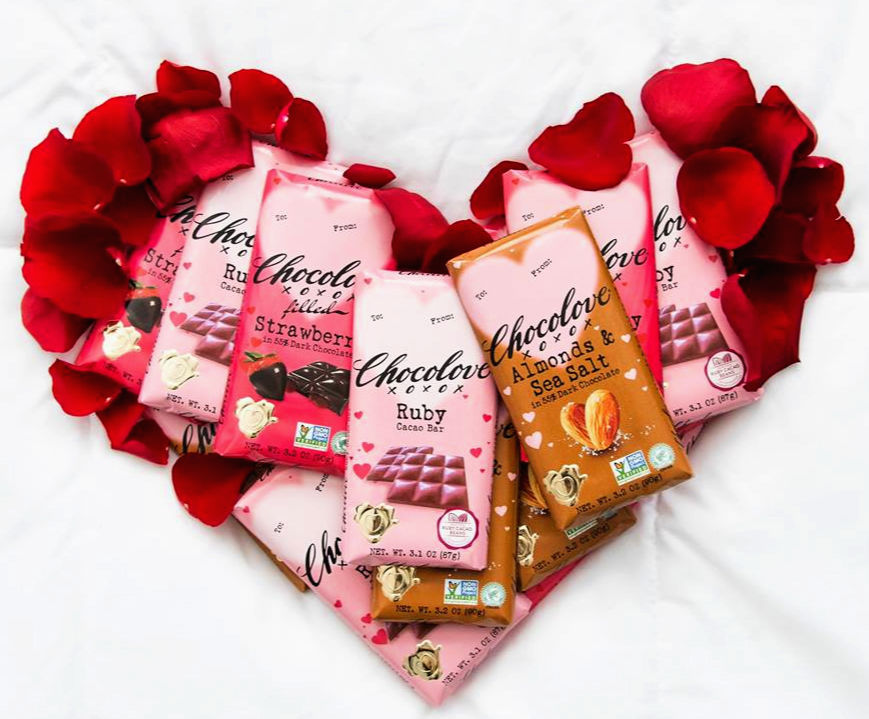
Valentine Trio: Strawberry, Ruby and Almonds & Sea Salt
I’ve spent a few years now learning the stories behind chocolate makers and what compels them to begin their journey into making chocolate. Interestingly, many of them traveled overseas with an organization to help support less-developed countries, and while there, stumbled upon the magical cacao bean. Quite literally, when the cacao pod cracked open, so did new worlds, and these adventurers haven’t looked back.
Timothy Moley, the founder of Chocolove, is part of this distinguished group of chocolate do-gooders. For him, it all began in a cocoa field in Indonesia over 20 years ago.
More to the Man
Chocolove’s website tells us, “Timothy was chewing on some cocoa beans doing volunteer work for USAID, a government program that promotes agricultural and technical education in developing countries.
He had been living abroad on and off for two years, visiting over 28 countries, developing his palate with spices, teas and wines.
And, like most of us, he had always dreamed of being his own boss, dedicated to something he loved. The idea of a career in chocolate inspired him, and an idea began to form – to create a premium chocolate bar, paired with the romance of love.”

CEO/Owner of Chocolove, Timothy Moley
Once he returned to the U.S., he began educating himself on chocolate and quickly discovered a few key facts about the U.S. chocolate market:
“After extensive taste sessions, I learned the average consumer could tell the difference between cheap chocolate and premium chocolate, and they preferred premium chocolate.”
But at that time, the available premium chocolate bar choices were limited, expensive and intimidating, the flavors were boring, and no U.S. company indicated the cocoa content on their wrappers.
Chocolove was about to change all of that.
“It started as the classic entrepreneur story – a dream, a garage, extended credit card debt and loans from friends and family. With its visionary chocolatier, and a solid concept, Chocolove became, and continues to be, a pioneer in the chocolate industry.”
They claim to be the U.S. chocolate bar company to break new ground by placing the cacao content on each wrapper. And, of course, if you’ve noticed Chocolove on the grocery shelves, you’re aware their flavor assortment is anything but boring. This ties right into their mission: to provide an assortment of distinctly flavored chocolate bars made with all-natural ingredients while using classic techniques of Europe’s finest chocolates.
But this begs the question…exactly what classic techniques are used in Chocolove Chocolate? Unfortunately, I couldn’t find an answer to that on their website but on Tim’s blog he references their chocolate products as being Belgian-made and that in 2015, they brought on board a master chocolatier/chef de chocolate, Patrick Peeters. He is a Belgian who is classically trained and worked his way up to master chocolatier over many years. He creates new taste treats for Chocolove daily and, as of 2017, offered some great new products into Chocolove’s lineup.
In regard to where Tim’s chocolate-making passion tendencies came from, however… that’s another story… I found plenty of jewels from his blog to pass along and help us understand Tim Moley a bit better.
An Inside Glimpse
For starters, he credits cooking, and in particular making chocolate chip cookies, with his mother, as one of the most formative experiences that helped shape his ability to create and run a chocolate company.
His love for dark chocolate was shaped early on in life by his mother. He tells us when he was a boy, he and his siblings were given Easter baskets and each one contained a chocolate Easter bunny.

“One year my older brother, who would often get started first, commented that his bunny tasted bitter. And like some extended version of the Life cereal Mikey Likes It commercial mixed with Goldilocks and the Three Bears, we five kids circled the table and tasted our bunnies and watched each other as we did.
And yes, they were all bitter and not the usual milk chocolate.
We discussed the pros and cons of asking my mom about this. My mom informed us that it was, in fact, dark chocolate.
She commented that she liked dark chocolate and if we ate it we would acquire a taste for it. Hmm… I thought to myself. I guess I could eat it because an acquired taste sounded like a good thing to have.
My brothers and sisters were locked in solidarity and disdain for the dark and so, one by one, I traded away my marshmallow bunnies, my jelly beans, and my small chocolates to amass a basket full of dark chocolate bunnies—albeit with some bite marks. My mother did not see the trading floor but had some comment on all the bunnies in my basket at the end of the day. I recall thinking that if I ate enough I would acquire a taste. I ate so much chocolate that I experienced a mild euphoria and a sense of well-being.”
And the credit for teaching Tim enterprise goes to his father…
“Growing up in a family of five kids, I was his helper; perhaps because I was willing to listen, wanting to learn, or because I found it more interesting to be working than playing. Frequently, my father would take me with him when he worked, which often translated into me working long hours with low pay, often for peanuts, literally.
However, some of our endeavors were more classic-natured such as a lemonade stand. His father had owned a small soft-drink company in the late 1930s and my father was also a chemist by training, so it was no surprise that my father knew how to make great lemonade.
I can still recall (over 4 decades later) going to the SunMart grocery store and watching my father negotiate with the Produce Manager to buy lugs of lemons. Then we would clear the shelf of bags of sugar, empty the Dixie Cup shelf, and finally make a major dent in the bagged ice freezer. I was puzzled by the quantity that we were buying, but proud to push one heavy grocery cart, and it got lots of comments and smiles.”
Tim and his father set up a lemonade stand next to the Number 4 tee at the near-by golf course and sold lemonade like crazy. So well in fact, the manager bought a cup of it, told them it was good, but then made them close up shop because they were taking too much revenue away from the golf course.
“My father and I enjoyed the small win of doing so well we were asked to stop.”
It All Adds Up to Great Chocolate
Take these formative experiences and combine them with the extensive amount of traveling Tim did overseas, and his experimentation with chocolate in general, and we get a clearer picture of how Chocolove came to be.
He traveled to Vienna at the age of 21 in search of the world’s best chocolate cake and he did indeed find great cake there. And over 27 years ago, he was tasked with making a desert for a wine tasting group he was member of, since he was interested in learning how to make wine.
“I was working as a taster and Quality Control Manager for a spice and herbal tea company at the time. After a long day of work, I had little time to get ready for my wine tasting group. On my way home, I picked some black raspberries in a nearby field, and when at home I hustled to dip them in chocolate and chill them, and I sorted out the very best ones to take to the wine tasting.
The meal and tasting wound down to desert and then perked up again. It was quite amazing to me how my fellow tasters went (what I thought) was a bit overboard in their praise for the chocolate berry treat. At first, I thought it was the wine talking, but I watched and listened as people enjoyed the chocolate, savoring the moment and becoming much happier. This moment made a lasting impression on me.
The tasting group appointed me their dedicated chocolatier. This started a pattern of me making larger and more frequent batches and using a variety of chocolates for a number of occasions.”
Of course, like all other beginning stages of chocolate-making, Tim had to experience the painful trial and error stage of creating quality chocolate.
Fitting for our tie-in to Valentine’s Day, on February 13, 1992, Tim found himself standing in a craft store checkout line, clutching chocolate molds, little boxes, heart stickers, ribbon and the like.
“I was surrounded and probably looking wide eyed. Even though I was a tan, six-feet-two surfer dude, with salt-bleached hair in a craft store, I was flanked and surrounded by four crafty women at the checkout line. They had sized me up and had the “you-ain’t-from-around-here-are-you” look. And bless her heart, one was not as shy as the others and began to quiz me, to see what I knew and how she might help me. And soon the others chimed in with advice on what type of chocolate and how to temper and so on.
All the while, my head moving in various directions, nodding and trying to remember it all. The store clerk was a little nonplussed to see people not checking out and to hear such a fuss over a surfer dude, who was sure to wipe out on his effort to make chocolate truffles for Valentine’s Day. To my credit, I did not drop my armload and bolt and I did not bail on my half-baked plan.
That night, I labored and toiled in the kitchen. Not a surface, pan, or bowl was free of cocoa powder or chocolate. I was a mess and after 6 hours of espresso extracting, brandied cherry squeezing, chocolate tempering, mixing and stirring, some brandy drinking, and a whole lotta taste testing along the way, I was done. I was wired and rattled. I oddly felt the same emotion as riding a big wave in the dark: I could not see it, only feel it. Eight hours later it was February 14, and I was at work with a chocolate hangover, sheepishly handing out little boxes of four truffles to the ladies at work.
Later in the day I was phoned by one who had to go home due to her experience: ‘OH MY GOD! What did you put in those truffles?’
‘Espresso in some and brandied cherries in others,’ I explained, and added, ‘I didn’t expect you would eat them all at once.’”
Chocolove Today
After a few years of amateur experimentation with chocolate, (and more humorous ones, too, I’m sure), a baby girl entered the picture, along with Tim’s need and desire to take care of his family… thus the impetus for starting Chocolove.
“The courage to start came from the ability to taste in chocolate what others might have missed, and the confidence to start Chocolove came from years of making people happy with chocolate.”
Chocolove’s website says that, intitally, Chocolove bars were manufactured at a U.S. co-packer, but in late 2003, Timothy completed building his custom-designed chocolate factory in Boulder, Colorado, an ideal climate for chocolate with its dry, cool mountain air. By mid-2004, the factory was in full swing, and 23 years later, Chocolove bars are still made in small batches and shipped around the country to chocolate lovers everywhere..
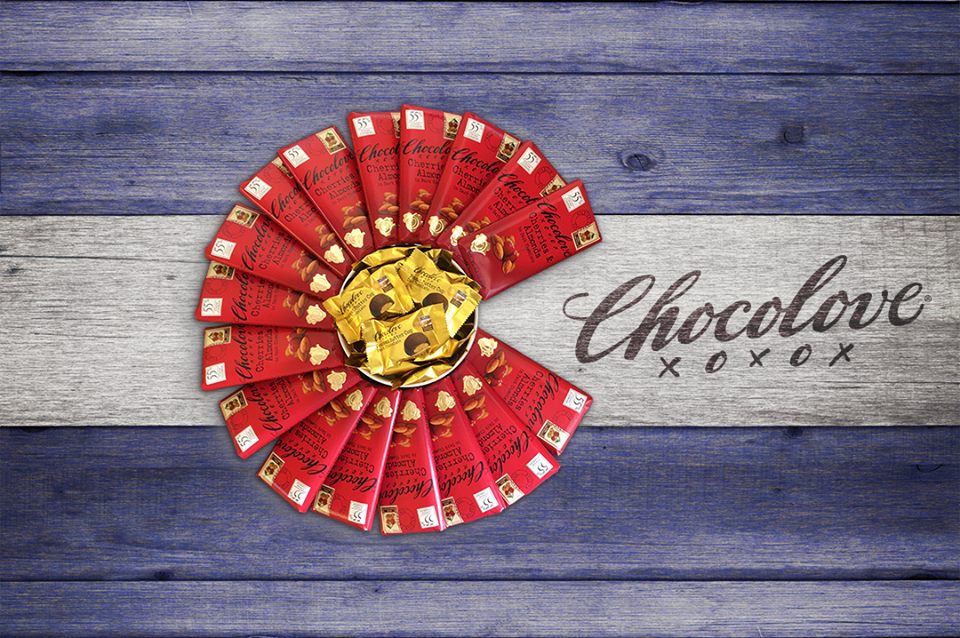
Show Me the Meaning
I must admit, when I first investigated Chocolove’s website, the extent to which they revealed their ethical practices seemed minimal. Exactly where they acquire their chocolate isn’t spelled out like it is on many other ethical chocolate makers’ websites. So, it left me feeling a little skeptical, wondering if perhaps the company isn’t really doing a whole lot to improve sustainable farming practices.
Add to that how their In the News snippets on their site date back to 2008, and I wasn’t exactly feeling the company was keeping up with cutting edge media opportunities… but given the primary concern for a chocolate maker is to make good chocolate and not be a socialite, this shouldn’t be given much weight. Still, the hope is that the company we buy chocolate from is concerned about the same things we are as chocolate connoisseurs… sustainable farming practices, ecologically sound production and fair wages seem to be the main issues.
All we know is that Chocolove’s chocolate is Belgium-made, but we have no idea who the farmers are or where the chocolate is sourced from.
So, I continued to dig… and although I couldn’t find more on where the Belgium-made chocolate is sourced from, I did find more extensive details on Chocolove’s ethical involvement on a sub domain to Chocolove’s website… beginning with none other than the Rain Forest Alliance.
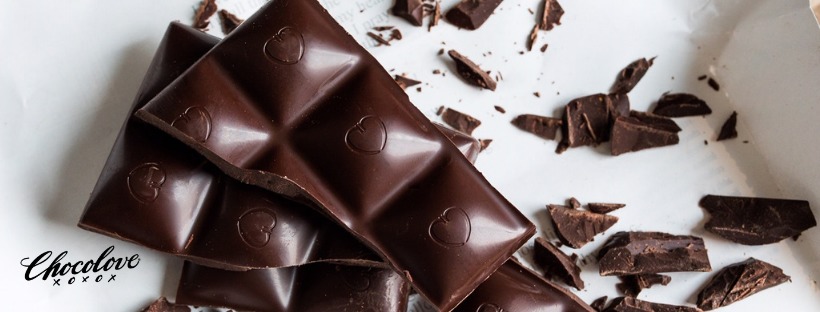
Rain Forest Alliance
For years, Chocolove has sourced cocoa beans from Rainforest Alliance Certified farms through the Zurich-based IMO (Fair for Life) organization. But IMO was acquired by a larger European firm called Ecocert, which decided to no longer accept Rainforest Alliance Certified cocoa beans under the Fair for Life program. Simultaneously, the Rainforest Alliance merged with the Netherlands-based firm UTZ, with the aim to increase scale and impact and streamline farm certification.
The Rainforest Alliance had set up and trained many farmer coops on labor and land practices for the farmer cooperatives from which Chocolove sourced. Also, Chocolove’s Belgian chocolate supplier had further trained the same farmer cooperatives on quality and had agreed to long-term contracts to purchase cocoa beans from them for 1 to 2 years into the future.
“When we were faced with making the decision between certification programs, we chose to stay with and support the farmers who have opted into responsible labor and land practices and have improved their operations and quality under the Rainforest Alliance program. These farmers trusted us with their future and we will continue to stick with them. The Rainforest Alliance has in fact raised the bar for their farm certification over the years and now, together with UTZ , we again find our best fit.”
Fair Trade
Chocolove makes three flavors that are Fair Trade and Organic, although I could only find two varieties currently on their website.
“We received requests to make additional products under the Fair Trade co-brand, so we made three to test the market, to see if verbal and written requests would be matched by consumer buying activity. Unfortunately, despite a vocal group who wrote and called for Fair Trade, the same group (as well as the consuming public) has not bought the bars in sufficient volume to warrant new flavors being made with Fair Trade chocolate. Our efforts to make fantastic Fair Trade chocolate bars, along with our subsidizing of the true cost of these bars with profits from other non-Fair Trade bars, still has not shown sales at a volume that warrants additional Fair Trade products.
We have customers who want Fair Trade and so we make bars for them.”
Online you can also find gift sets with an assortment of cordials which you can read more about in this month’s article covering Valentine’s Day chocolates And, of course, the reason Chocolove is being featured in On the Chocolate Regular is because they’re a regular find in stores across the U.S.
Just go into their store finder online and you’ll find a plethora of locations to choose from. It’s easy to share in the Chocolove this Valentine season.
If you’d like to dive deeper into Chocolove, click here to visit their website.
And connect with Chocolove further via the following links:
Facebook: https://www.facebook.com/chocolove
Twitter: https://twitter.com/chocolovexo
Instagram: https://www.instagram.com/chocolove/

